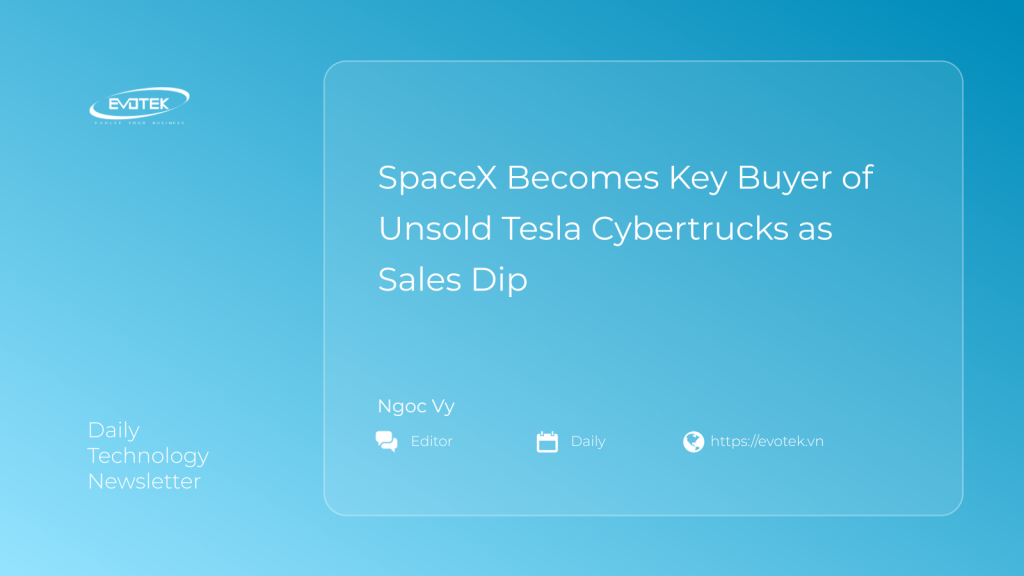In a significant move to manage inventory, hundreds of Tesla’s distinctive Cybertrucks have been delivered to SpaceX facilities, with projections indicating thousands more are on their way. This internal acquisition by Elon Musk’s rocket company comes at a time when the all-electric pickup truck faces substantial sales hurdles.
Despite an impressive annual production capacity of 250,000 units, the Tesla Cybertruck has struggled to find buyers, with approximately 20,000 units sold annually. This disparity has led to a growing surplus, prompting the innovative solution of integrating the trucks into SpaceX’s operations.
The Cybertruck’s market performance has seen a notable decline, dropping to third place in the electric pickup segment. Sales figures for the second quarter of 2025 revealed only 4,306 units sold, placing it behind formidable competitors like the Ford F-150 Lightning and the Hummer EV. This represents a stark 50 percent decrease compared to the same period in 2024.
Cybertrucks Deployed to Starbase and Beyond
To address the burgeoning inventory, Elon Musk has orchestrated for SpaceX to take on a substantial number of these unsold Cybertrucks. Deliveries have been made to critical SpaceX locations, including Starbase in Boca Chica, Texas, and the Starlink factory in Bastrop, Texas. Additionally, several truckloads of Cybertrucks have reportedly arrived at xAI’s offices, further extending their internal deployment.
Wes Morrill, the lead engineer for the Cybertruck, expressed enthusiasm for this development. “Love to see the ICE support fleets from Tesla and SpaceX get replaced with Cybertruck,” Morrill stated, highlighting the long-term vision for the vehicle. “When we were engineering it, this was always part of the dream. Never imagined how hard the fleet photos at Starbase would go. Looking forward to more of this.”
At SpaceX, these robust electric pickups are expected to serve a practical role, supporting engineering teams and general operations staff, effectively replacing existing internal combustion engine (ICE) fleets.
Understanding the Cybertruck’s Sales Challenges
Several factors have contributed to the Cybertruck’s struggles in the competitive EV market:
- Divisive Design: From its initial reveal, the Cybertruck’s unconventional, angular aesthetic has generated mixed reactions, appealing strongly to some while alienating others.
- High Price Point: The vehicle’s premium asking price has been a significant barrier for many potential buyers. This challenge was further exacerbated by the expiration of the $7,500 Federal EV tax credit, making it a less attractive option compared to more conventionally priced alternatives.
- Market Competition: With increasingly capable and often more affordable electric pickup options available from established manufacturers, the average consumer has a wider array of choices, often opting for trucks with more traditional designs and features.
As Tesla continues to seek long-term strategies for its electric pickup, the current arrangement with SpaceX provides a temporary solution, ensuring these innovative vehicles find a productive purpose within Elon Musk’s interconnected enterprises.

 日本語
日本語 한국어
한국어 Tiếng Việt
Tiếng Việt 简体中文
简体中文